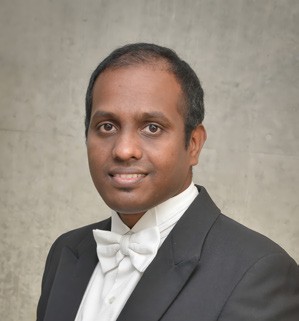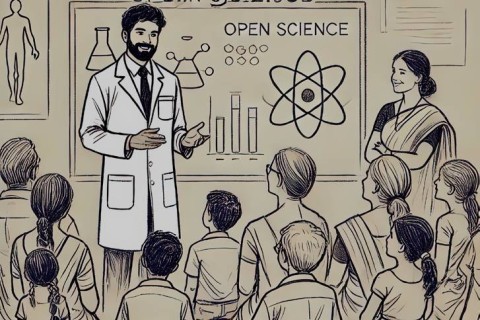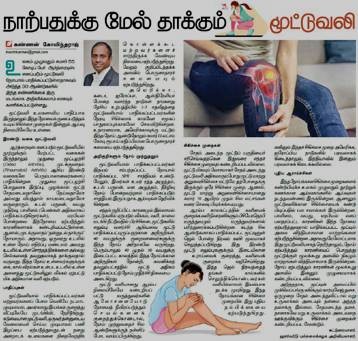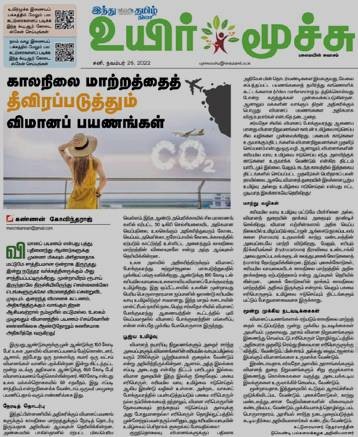Special Issue: Open Science in its many forms - Bridging the gap: Empowering communities through science communication
Newsletter
As a scientist specializing in osteoarthritis, I discovered the power of science communication when I shared my research in a local Tamil newspaper. The overwhelming response from readers, including patients, showed me the impact of making complex science accessible. Science communication bridges the gap between researchers and communities, empowering people with knowledge that transforms lives.
Bionote
Kannan Govindaraj is a molecular cell biologist, dedicated to understanding musculoskeletal diseases and translating scientific findings into clinical solutions. His research centers on how cells interact with their microenvironment - a key factor in disease pathology. His journey began with a Master’s in Molecular Biosciences in India, followed by specialized training in cell- biomaterial interactions and fluorescence imaging. During his PhD in the Netherlands, he developed an innovative biophysical tool to study cell behavior in osteoarthritis. Currently, as a Marie-Curie Fellow at Harvard Medical School, his work explores tissue engineering strategies, focusing on how cellular environments affect disease progression and potential therapies.

As a postdoctoral scientist specializing in osteoarthritis disease pathology, I have spent years deeply involved in laboratory research, data analysis, and academic publications. My focus was entirely on the scientific community, where my work would primarily reach other researchers, healthcare professionals, and students. However, my perspective on the role of a scientist and the impact of research took a transformative turn when I asked myself a simple question: “Why not communicate my research to a broader audience?”
This thought first emerged while I was in the process of drafting a complex scientific manuscript on osteoarthritis. I realized that, while scientists are adept at sharing information within our own circles, the people who might benefit most from understanding osteoarthritis — those affected by it or at risk — may not have access to, or the background to understand, scientific publications. Many people may not even be fully aware of what osteoarthritis is, the factors that contribute to it, or the treatment options available. This inspired me to try a different approach: I decided to write an article for a regional Tamil newspaper, explaining osteoarthritis in a simple, accessible language.
When the article was published, the response was overwhelming and heartening. People reached out to me via email and social media, sharing their personal experiences with osteoarthritis and expressing gratitude for the information. Some individuals were people I knew personally but had never shared their struggles with the disease until then. They told me that, had the article not been written in Tamil and published in a local newspaper, they might never have understood osteoarthritis in this way. For the first time, I felt a direct connection with the individuals impacted by the disease I studied in my lab. Their response gave my research a new meaning and a new purpose. My work no longer felt like an abstract academic pursuit — it was now a mission to find solutions that could improve real lives. This experience highlighted the critical role of science communication in bridging the gap between researchers and the communities they aim to serve.
Inspired by the impact of this outreach, I began exploring other topics for public communication. Following the success of my article on osteoarthritis, I wrote another article about the aviation industry's environmental impact, explaining how air travel contributes to global warming and discussing the environmental costs associated with frequent flying. Once again, the response was powerful. Readers expressed surprise at learning about the significant environmental impact of air travel, and some shared that they would think more critically about their travel choices in the future. The positive feedback emphasized the importance of science communication not only in educating the public but in potentially influencing behaviors for a healthier planet.

These experiences have shown me that scientists have a vital role to play in engaging with local communities, not only to share knowledge but to empower people to make informed decisions. In academia, the focus is often on publishing in peer-reviewed journals aimed at a specialized audience. Yet, the public rarely has the opportunity or background to engage with these publications. By writing in Tamil, a regional language, and choosing an accessible platform like a local newspaper, I could reach a new audience — one that was both appreciative and eager to know these facts.
These outreach experiences have not only given me a new perspective on the value of science communication but also inspired me to continue engaging with the public. As scientists, we have a responsibility to make our research and knowledge accessible to those who can benefit from it. In a world where misinformation often spreads faster than facts, it is crucial for scientists to take an active role in ensuring that the public has access to accurate, understandable information. Engaging with the public in this way builds trust in science, fosters informed decision-making, and strengthens the connection between researchers and the communities they serve.


Through my experience, I have realized that science communication does more than just share knowledge — it builds connections, fosters understanding, and reshapes the priorities of the scientist. It turns a researcher from someone who studies a topic in isolation into an advocate who serves the community. I hope to inspire other scientists to engage with their communities, share their research, and bring their work to life for a broader audience.
Kannan Govindaraj
LinkedIn
MCAA Newsletter Editorial Board
Marie-Curie Fellow, University of Twente,
The Netherlands & Harvard Medical School, USA